Application of Digi 6UL Core Module in Wireless Magnetic Vehicle Detection Systems
In the past two years, “magnetic vehicle detectors” have suddenly become active in the smart parking industry, with numerous brands emerging in the market. In fact, magnetic technology has undergone over a decade of development and upgrades.
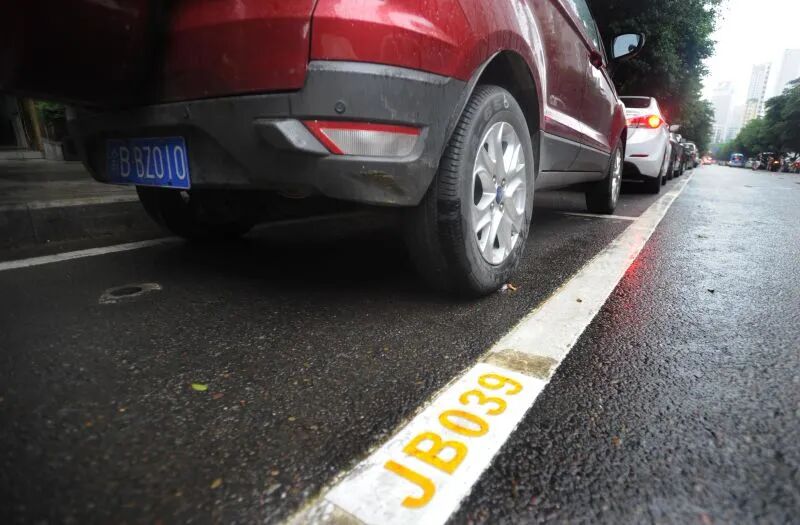
1. Principles of Wireless Magnetic Detection Technology
In the absence of external disturbances, the Earth’s magnetic field remains relatively stable. When an object passes over or stops above it, the magnetic field value experiences slight changes. Metal objects cause more noticeable disturbances to the magnetic field. Wireless magnetic detection analyzes changes in the Earth’s magnetic field to detect motor vehicles. When there are no motor vehicles above the magnetic sensor, the Earth’s magnetic field is stable, and the system defaults to no vehicle presence. When a motor vehicle passes over the magnetic sensor, it causes a change in the Earth’s magnetic field, prompting the system to recognize the presence of a vehicle and upload this data via a wireless communication protocol.The wireless magnetic detection system uses embedded wireless magnetic detectors in the road surface to detect the presence and passage of vehicles. It employs low-power radio communication technology to transmit detection data in real-time to nearby gateways (if the signal transmission distance is affected, repeaters will be added). Once the data reaches the gateway, it is transmitted to a cloud data management platform or local server via wired or wireless means, allowing local signal controllers to adjust traffic light states at intersections, achieving smart traffic objectives.
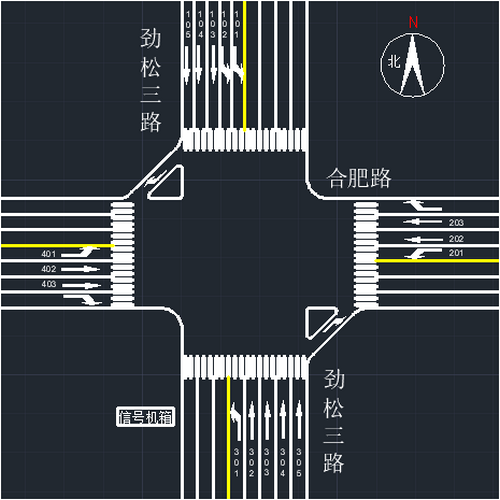
2. System Composition of Wireless Magnetic Detection System
Taking XBC’s wireless magnetic detection system as an example, the system includes:
1. Wireless magnetic vehicle detection system terminal detector (XBC-T-001): The XBC-001 implements management based on IoT management concepts to maintain its devices in good condition and provide services to users.2. Wireless magnetic vehicle detection system router (XBC-R-001);3. Wireless magnetic vehicle detection system coordinator (XBC-BS-001);4. Wireless magnetic vehicle detection system intelligent host (OVD-IM-001);5. Communication server;6. Management client.3. Main Functions of the Wireless Magnetic Detection System
The main function of the wireless magnetic vehicle detection system (XBC-001) is to report the traffic conditions and statuses of vehicles on urban roads, parking lots, and other locations to other systems. For example, in intersection applications, XBC-001 sends data to the intersection signal control system and the city center server.
1. Provides data support for traffic management departments and decision-makers;2. Detects traffic flow information: such as traffic volume, speed, queue length, etc.;3. Detects vehicle information: such as speed, length, and spacing;4. Intersection data linkage: publishes real-time traffic information.5. Additionally, it can provide various solutions based on actual traffic needs, such as signal control, traffic information collection, and variable lane applications.
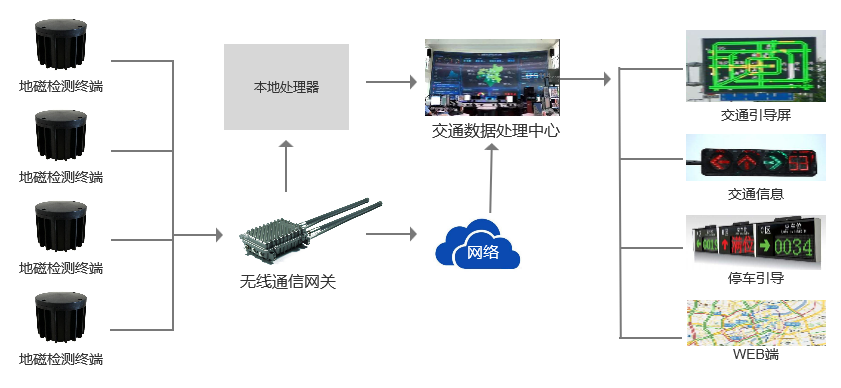
4. Main Technical Indicators of the Wireless Magnetic Detection SystemTaking XBC’s wireless magnetic detection system as an example, its main technical indicators are:1. Traffic volume accuracy: 99%;2. Speed accuracy: 90%;3. Occupancy time accuracy: 95%;4. Headway accuracy: 97%;5. Time occupancy rate error: less than ±2%.5. Current Status of Vehicle Detectors at Home and AbroadThe vehicle detectors used on domestic and foreign roads mainly include: coil vehicle detectors, video vehicle detectors, and microwave vehicle detectors. The effectiveness of these detectors in practical use is affected by various factors, such as:
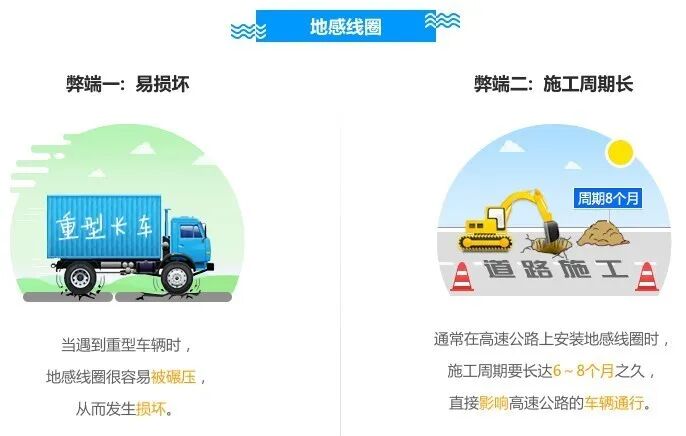
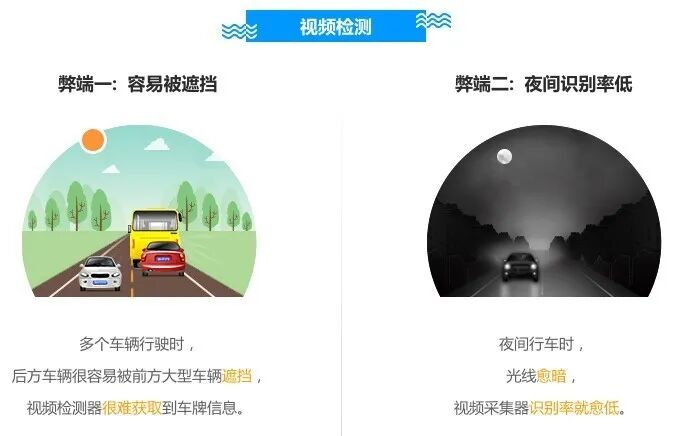
Comparison of several vehicle detection technologies is as follows:
|
Comparison Item |
Video Detector |
Inductive Loop Vehicle Detector |
Microwave Vehicle Detector |
Wireless Magnetic Detector |
|
|
1 |
Installation |
Simple, Fast |
Difficult, Slow |
Simple, Fast |
Simple, Fast |
|
2 |
Setup |
Moderate |
Simple, Fast |
Moderate |
Simple |
|
3 |
Detection Performance Verification |
Visual Confirmation |
High Detection Accuracy |
High Detection Accuracy |
High Detection Accuracy |
|
4 |
Flexibility |
Flexible |
Inflexible |
Flexible |
Flexible |
|
5 |
Detection Area |
Up to 8 lanes |
1 lane |
Up to 8 lanes |
1 lane |
|
6 |
Sensitivity to Detection |
Moving and Stationary Vehicles |
Moving and Stationary Vehicles |
Only Moving Vehicles |
Moving and Stationary Vehicles |
|
7 |
Detection Directionality |
4 Directions |
Not Applicable |
2 Directions |
1 Direction |
|
8 |
Impact of Mixed Vehicle Types on Detection |
Affected |
Affected |
Affected |
Not Affected |
|
9 |
Maintenance Cost |
Low |
Very High |
Low |
Low |
|
10 |
Lifetime |
7 years |
Less than 5 years |
7 years |
5-8 years with battery replacement |
6. Building a Wireless Gateway Solution Using the Digi ConnectCore 6UL Core Module
Main parameters of the Digi ConnectCore 6UL core module:
|
Form Factor L x W x H |
SMT, 29 mm x 29 mm x 3.5 mm, 76-pad castellated vias, or LGA-245 |
|
CPU |
NXP i.MX6UL, Cortex-A7, 528 MHz |
|
Network Connectivity |
802.11a/b/g/n/ac (1×1) Bluetooth 4.2 Dual 10/100 Ethernet, or Ethernet only |
|
Memory |
Up to 2 GB NAND flash, Up to 1 GB DDR3 |
|
Graphics |
2D Pixel Processing Pipeline (PXP), 8-/16-/18-/24-bit parallel LCD Display up to WXGA (1366×768), 8/10/16/24-bit Parallel, CSI with BT.656 support |
|
OS Support |
Yocto Project Linux |
|
Wireless Certifications |
US, Canada, EU, Japan, Australia, New Zealand |
|
Environmental |
Temperature: IEC 60068-2-1, IEC 60068-2-2, IEC 60068-2-78 Vibration/Shock: IEC 60068-2-6, IEC 60068-2-64, IEC 60068-2-27, HALT |
|
Operating Temp |
-40° C to +85° C |
|
Development Kits |
CC-WMX6UL-START; CC-WMX6UL-KIT |
The Digi ConnectCore 6UL core module is a connected, secure IoT main control platform. It integrates the NXP i.MX6UL embedded processor based on the Cortex A7 architecture and industrial-grade NAND flash (SLC), DDR3 memory, security chip, Wifi/BT, and other components into a compact and ultra-thin package, providing a convenient industrial-grade development kit for IoT applications and development, validated BSP support packages, and highly customized U-Boot bootloaders to accelerate product development and time-to-market. The Digi ConnectCore 6UL core module measures only 29 mm x 29 mm x 3.5 mm, making it extremely thin and chip-like, yet it is a fully functional core board running the latest embedded Linux kernel, allowing users to quickly develop long-term industrial products. The relevant BSP low-level drivers are maintained by Digi, with a supply guarantee of 7-10 years. The NXP i.MX6UL core controller features very low power consumption and powerful interfaces to meet the performance requirements of IoT gateways and connected devices.If you are interested in the Digi 6UL module, please contact: Manager Jia at 13401050976.
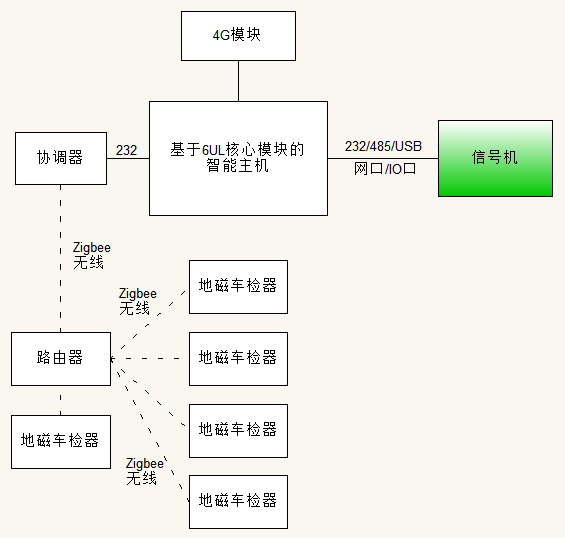
The intelligent host connects to the coordinator via a 232 interface, collects vehicle information gathered by the magnetic vehicle detectors, processes the data, and transmits the relevant information to the signal controller via 232/485/USB/Ethernet/IO ports, or outputs it to the cloud platform via a 4G module.
7. Two Main Application Scenarios for Magnetic Vehicle Detectors1. Traffic Flow Data CollectionUsed for highway condition detection, urban road condition detection, road checkpoint capture, ETC lanes, vehicle arrival warnings, tunnel congestion control, etc. We refer to this type of magnetic vehicle detector as a dynamic magnetic product.
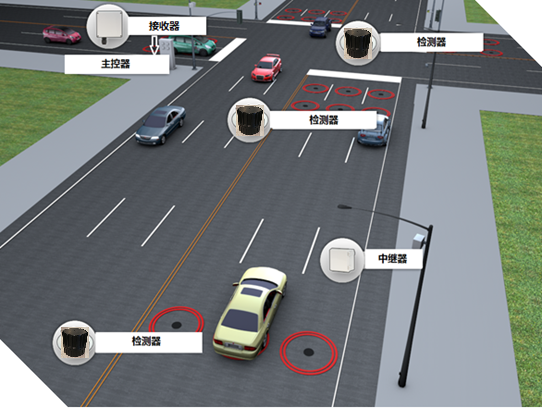
2. Parking Information Collection
Used for parking space guidance technology solutions, fire lane blockage warning solutions, accurately collecting and recording vehicle entry and exit data, and dynamically monitoring the status of parking resources. We refer to this type of magnetic vehicle detector as a static magnetic product.
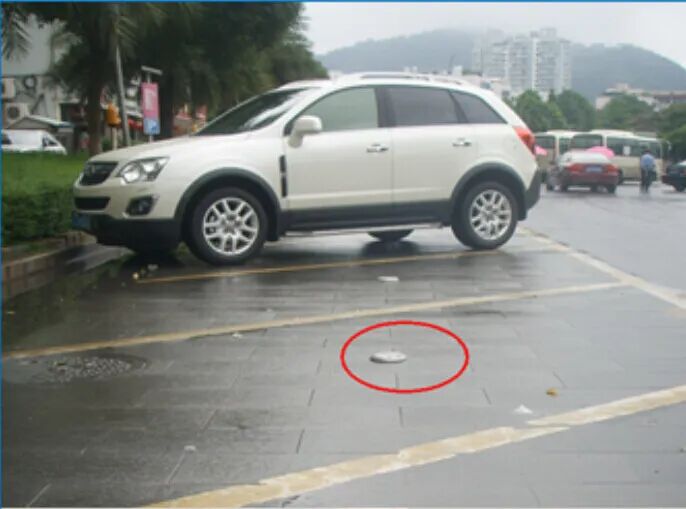
8. Q&A for XBC Wireless Magnetic Products1. Q: What devices make up your magnetic products? A: The wireless magnetic vehicle detection system terminal detector (buried underground, also known as the wireless magnetic detector), wireless magnetic vehicle detection system coordinator, wireless magnetic vehicle detection system router, wireless magnetic vehicle detection system intelligent host.2. Q: How long can the battery of the wireless magnetic detector last?A: There are several models:The XBC-T-001 series used for traffic volume detection can last about 4-5 years; the enhanced version can last about 6-8 years. The XBC-T-002 model dedicated to parking space detection can last about 8 years;3. Q: What is the communication distance between the wireless magnetic detector and the router? A: About 200 meters without obstruction.4. Q: What is the communication distance between the coordinator and the router?A: About 800 meters without obstruction.5. Q: How many wireless magnetic vehicle detectors can one coordinator support?A: There are two situations, applied to signal control systems and parking management systems. In signal control applications, one coordinator can support 20 wireless magnetic detectors; in parking management applications, one coordinator can support 255 wireless magnetic detectors.6. Q: What if there are more than 20 magnetic detectors for intersection signal control?A: Add a router. Adding one router can increase the capacity by 20 wireless magnetic detectors.7. Q: What is the difference between a coordinator and a router?A: The coordinator is the network organizer of the ZigBee protocol, while the router is a network participant. The coordinator and intelligent host communicate via data lines, while the router only needs power and forwards data wirelessly. Ultimately, communication occurs between the coordinator and the wireless magnetic detectors, with the router serving to extend communication distance and capacity.8. Q: How high should the coordinator and router be installed? A: About 5 meters.9. Q: What auxiliary materials are needed for the installation of wireless magnetic detectors?A: Quick-drying cement, with installation material costs of about 2 RMB per magnetic detector.10. Q: Is a pole required for intersection signal control?A: The omnidirectional antennas we use do not have strict location requirements; we generally use the poles of cameras without needing separate poles.11. Q: How does the intelligent host communicate with other systems?A: The intelligent host communicates with the on-site signal controller using any of the following methods: point signal, serial port, 485, or Ethernet. The intelligent host generally communicates with the city center server via Ethernet.12. Q: What are the differences between a simple host and a non-simple host? A: The simple host can only output 16 node signals and has no other communication methods. It is generally used in access control systems and trigger capture. The simple host does not provide maintenance functions for magnetic detectors and cannot monitor their operational status. The simple host reduces system application costs.13. Q: Can a simple host be used for intersection signal control? What equipment is needed? A: If data transmission is not required at the intersection, a simple host can be used for intersection signal control. If there are an average of 10 wireless magnetic detectors at the intersection, the required equipment is as follows: 1 simple host; 10 wireless magnetic detectors.Generally, a router is not needed, but if the distance is long or there are obstructions like bridges, a router can be added.14. Q: What equipment is needed for intersection signal control using a non-simple host? A: If there are an average of 10 wireless magnetic detectors at the intersection, the required equipment is as follows:1 intelligent host; 1 coordinator; 10 wireless magnetic detectors. Generally, a router is not needed, but if the distance is long or there are obstructions like bridges, or if the number of magnetic installations exceeds 20, a router can be added.15. Q: What equipment is needed for a parking space detection system? A: 1 intelligent host; 1 coordinator; N wireless magnetic detectors; M routers. N is the number of parking spaces; M is determined based on actual applications; the coverage radius of the coordinator and router is 200 meters; the coordinator can support 255 wireless magnetic detectors and 6 routers; each router can support 255 wireless magnetic detectors and 6 routers; the routing depth is 5 levels.16. Q: Can your wireless magnetic system detect speed? A: Yes. Generally, two wireless magnetic detectors are buried 5 meters apart, and the headway is known; with a distance of 5 meters, the speed can be calculated.17. Q: Can the system detect the queue length of vehicles waiting? How is it detected? Where should the magnetic detectors be buried? How many are needed?A: Yes, the detectors should be buried on the centerline of the lane, with one buried 3 meters from the stop line, and generally spaced 10-30 meters apart. Typically, 2-5 detectors are buried.
If you are interested in magnetic products, please contact: Ms. Yan at 13301360327.

Recommended Reading of Previous Articles (Click on the article title to read directly):
1.Advantages and Disadvantages of Various Vehicle Detection Technologies;
2.How Much Do You Know About Magnetic Sensors;
3.How Many Manufacturers of Wireless Magnetic Vehicle Detectors Are There;
4.Current Status and Development Analysis of Domestic Magnetic Vehicle Detectors;
5.From the Billion Club List of the Past Two Years, Observing the Development of China’s Urban Intelligent Traffic Market;
6.Discussion on Intelligent Traffic Systems and Mainstream Vehicle Detection Technologies;
7.Intelligent Warning System for Sharp Curves in Mountain Areas.